Get Your Copilot

Chatbot For Data Analytics
Chabot for data analytics will help you with the analysis and visualization fo important KPIs and metrics, which help you to understand what your customers are looking for.
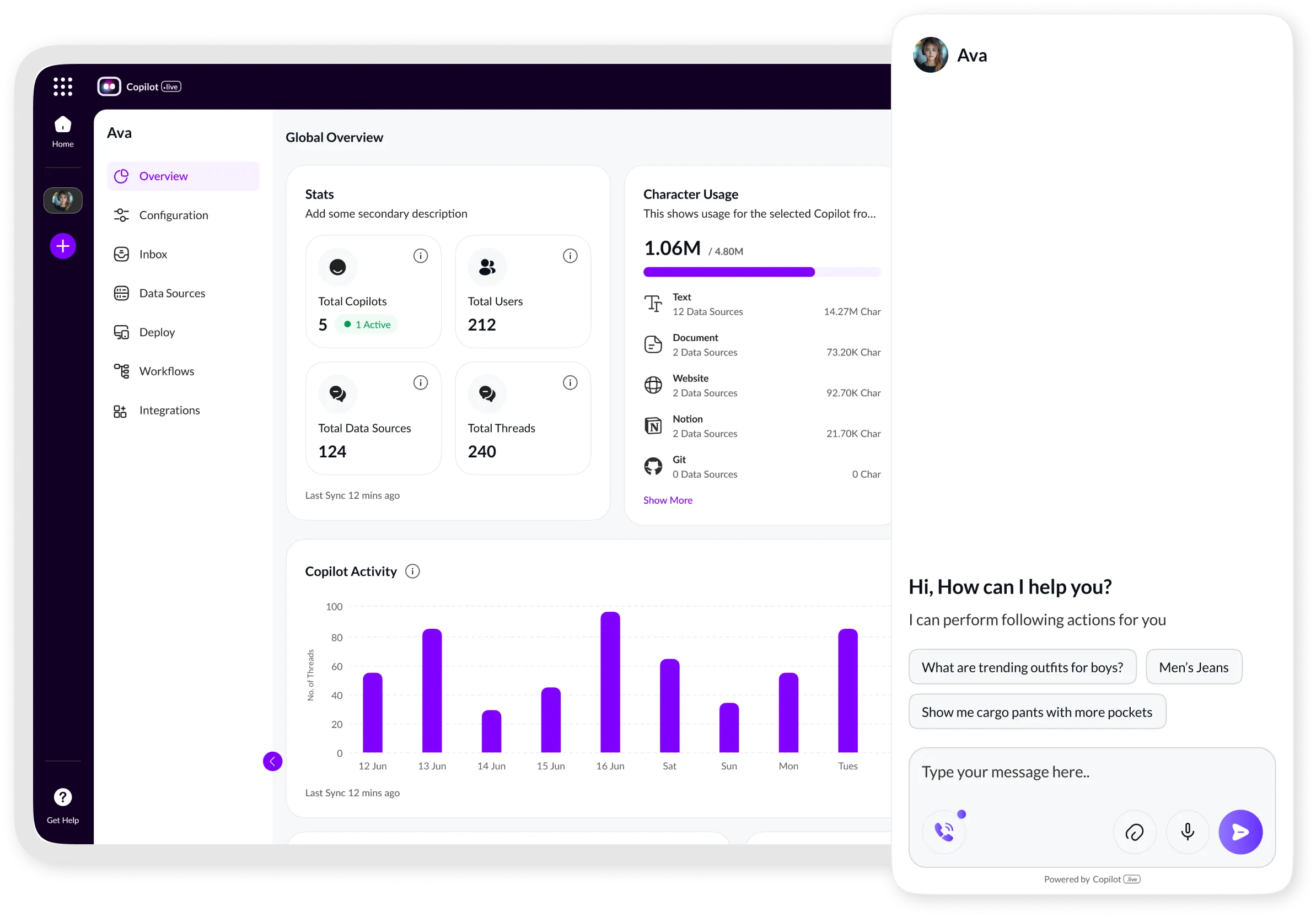
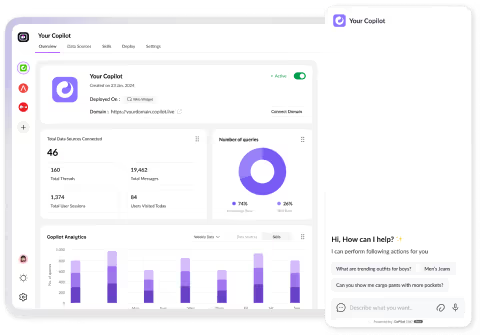
Chatbot For Data Analytics
Chabot for data analytics will help you with the analysis and visualization fo important KPIs and metrics, which help you to understand what your customers are looking for.


Build an AI assistant in 3 minutes
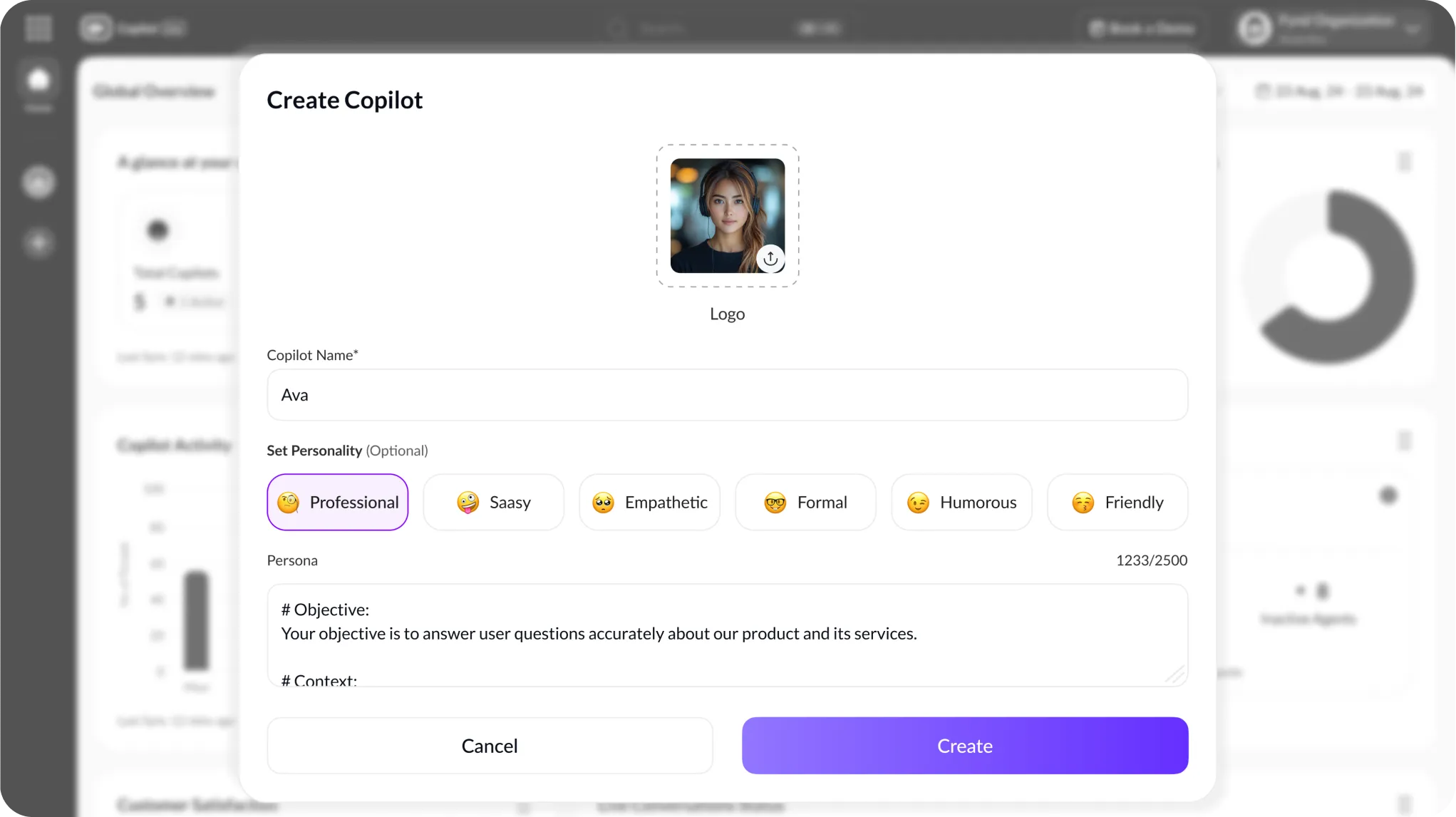
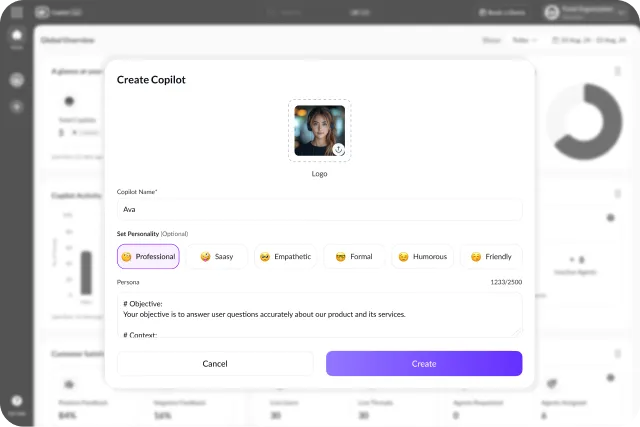

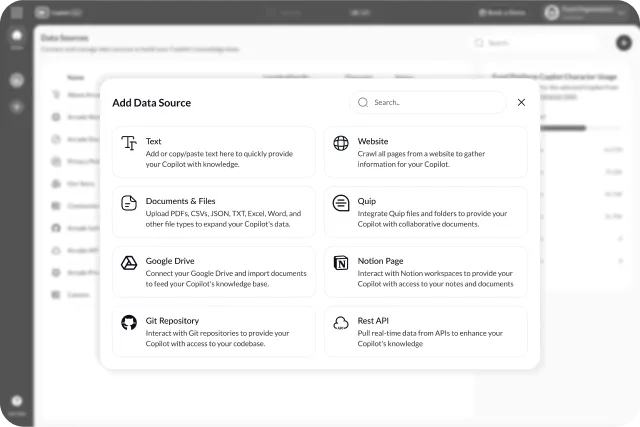
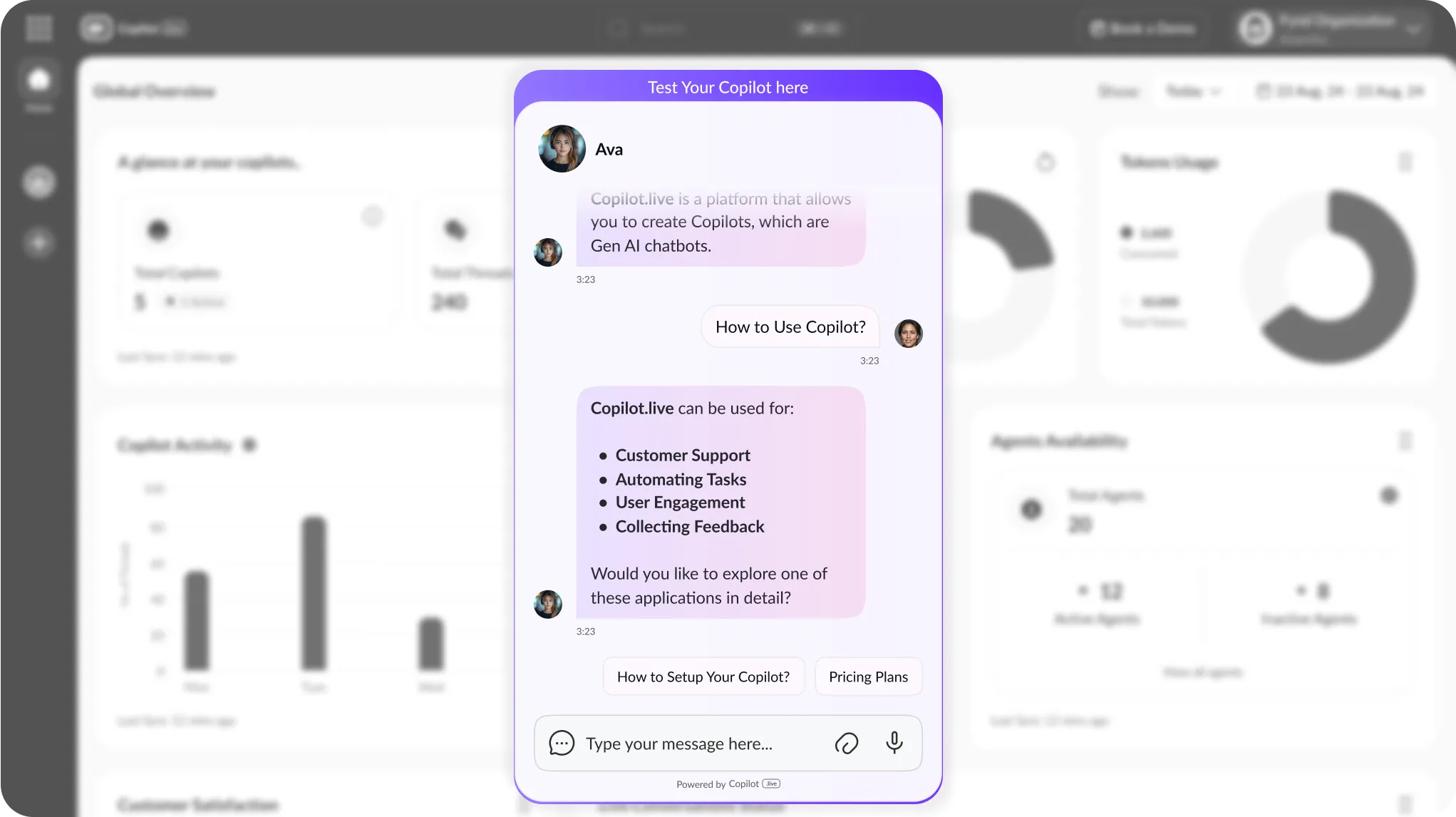
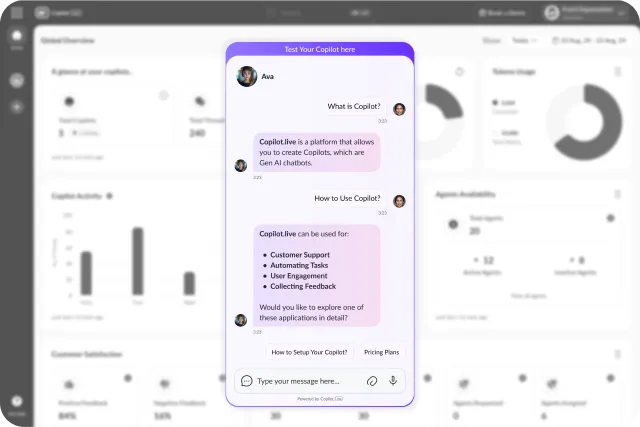
How to create Chabot for data analytics
Visit the website
Visit Copilo.Live website and you are ready to explore the data analytics chatbot by just clicking on the signup button at the extreme right side of the nav bar.
Signup to website
Sign up to the website using your personal email address or official email address. Fill out the complete form of the profile.
Add data source
Once you have made an account, you are good to add the data source to the Copilot.Live platform to analyze it and train the model to give the filtered output.
Deploy to your system.
Once your AI data analyst Chabot is ready with the trained model, you are good to deploy in any of your systems like website, app, CRM, etc.


What is an AI chatbot for data analytics?
AI chatbot for data analytics is a computer program that is designed to process, collect, and analyze data to make rigid decisions. AI Data analytics chatbot combines natural language processing (NLP), machine learning (ML), and data analytics capabilities to analyze data conversationally. Multiple businesses create huge amounts of data every day, and analyzing those data is nearly impossible when the data is very huge. Here, the AI data analytics chatbot helps businesses to automate the large analysis of a massive data set. The AI chatbot for data analytics will help you improve comprehensive metrics and insights that are easy to use for your business.
Why you should use a chatbot for data analytics
Blockers Identification and Removal
AI chatbot of the data analytics is very smart that it will go deeper inside the process and flow to understand why the conversation flow is breaking down. It will understand your user behavior and its actions. It will analyze why the user is getting stuck and, all of a sudden, why the user is taking a different action instead of the desired action.
Chatbot will also check if there is a disconnection with customer support or is abandoned. It will also identify whether the conversation is escalated to an agent or not. Data analytics chatbot will identify the intent of the customer and understand it can enhance it to help them via connecting to agents then they needed the most.
Goal Completion Rate (GCR)
You will only be able to measure the success of the data analytics chatbot by looking at how many users are able to complete the actions you have created in terms of conversation flow. All the KPIs will only be met if you measure all important events and metrics if you only know that all your customer's needs are fulfilled with the help of a chatbot for data analytics if the task is related to the data and related work. Irrespective of the virtual AI Chatbot or any handoff to a live human agent.
Conversation Logs Analysis
Our chatbot will help your company with some great insights related to the group chat logs at the conversation level, and it will highlight all the multiple/different actions performed by your users/customers that all the customers do while making the conversations.
This will help you to understand the pain points of the customers quickly and troubleshoot the problem faster. Chatbot for data analytics will also provide you full conversation history of each customer to analyze it and understand the whole conversion deeply to come to any conclusion before taking a core decision.
End-to-End Data Integration and Analytics
With the help of our AI chatbot for data analytics, you and your team will be able to analyze the chatbot data analytics generated throughout the daily conversation between your customers and the AI chatbot. It will clean, synthesize, and connect this data to the hundreds of chatbot analytics tools, raw data, and warehouse tools housed in the Segment integration catalog for a unified data view. It will also help you to create analytical decisions concerning the comprehensive analytics to validate customer satisfaction and drive data-driven enhancements.


Who should use chatbots for data analytics?
The data analytics chatbot could be used by anyone interested in data analytics. Whether you are a business decision-maker or an executive, the chatbot will help you to answer key performance questions without even going to the complex data sets. It will help you to make informed decisions quickly by checking the real-time analytics through NLP queries. Suppose you are a data analyst or business intelligence team member.
In that case, the data analytics chatbot will help with error reductions, streamlined analysis, and collaboration with the tech data team with the nontechnical business insight stakeholders. Your customer support and service teams will be able to make better responses, which will improve customer satisfaction. Many of your customers themselves will sometimes use these chatbots to obtain insights or troubleshoot basic issues without human intervention.
Key features & benefits of a chatbot for data analytics.
Here, we are sharing four important key features of chatbots for data analytics, which are helpful in many ways related to business intelligence and improvements.
Conversational Natural Language Interface
The user will be able to extract data in everyday language interaction interfacing which will allow users to ask questions and retrieve insights using simple, natural language. This will help your nontechnical staff to use the data accessible to everyone of them. This will reduce the dependency on the data team and other technical staff.
Real-Time Data Integration
This will help all the data users to get instance access to the data available from multiple sources using the connection feature of integration. The timely decisions will help you to make decisions based on the latest information available, which will minimize the delay.
Automated Analytics & Reporting
The data AI chatbot will help streamline data processing features, which will automate routine data analysis tasks and reduce manual interventions. You will be able to generate error-free reports consistently. Chatbot will help you get a reliable and standardized report, providing you with accurate insights.
Customizable and Scalable Architecture
Our chatbot for data analytics is designed in such a way that it is tailored for experience. It will allow all the users to customize to fit specific business needs and workflows. It will also help in scaling the organizations. It scales as data volumes increase and organizational requirements evolve.
Use case of data analytics chatbot
Sales Performance Analysis
With the help of a chatbot for data analytics, you will be able to access and interpret sales metrics like revenue trends and regional. Performance. This will help the sales team to identify top-performing products and adjust strategies in real-time.
Marketing Campaign Insights
The data analytics chatbot will help your marketing team check the data of customer segmentation, campaign reach, and conversion rates. It will also help the marketing team to optimize budgets and messaging based on real-time performance data.
Financial Data Analysis and Forecasting
The chatbot will also help the finance team with data to analyze the expenditure, profits, and revenue of the company. It will also help in forecasts, detect anomalies, and generate financial reporting of the company without human agent involvement.
Healthcare Patient Data Analysis
Chatbot for data analysis of patients will analyze patient data to identify any type of sessional and nonseason trends of disease, predict disease, or recommend personalized treatment plans. The chatbot will also manage hospital operations and resource allocation.
Retail Inventory Management
In the retail industry, the chatbot will monitor inventory levels, predict stock shortages, and suggest reorder points. The optimization of inventory turnover can be performed with the help of analyzing the sales data.
Supply Chain and Logistics Optimization
The chatbot will help in analyzing supply chain data to identify problems, check delivery routes, and predict delays in shipment. Chabot, in data analytics for the supply chain, will also give real-time information on the shipping items and inventory details to the manager and stakeholders.
Employee Performance Analytics
With the help of the data of the HR department and employee performance, you will be able to analyze employee performance, track the attendance of the team, and identify training needs for individual employees. The chatbot will also help with workforce planning and talent management.
Product Usage Analytics
You will be able to check and understand user engagement, feature adoption, and feedback trends with the correct data product development teams in prioritizing enhancements and resolving pain points.


Key metrics to track data analytics chatbots
You have to check the containment rate, where you are going to check the number of conversations in which the chatbot will be able to satisfy your customer without handing over to the human agent. You have to check the coverage of the AI agent in which it is confident enough to know that it will be able to solve the problem of the user.
Check the total messages the AI chatbot received during each period and divide it by the total conversations during the same period. Then, you will be able to check the average message per conversation.


Frequently Asked Questions
You can reach out to us in case of any queries, feedback, or suggestions via [email protected] or read below.
A. Yes, the data analytics chatbot will take information from the data you have provided and help you to make decisions based on the numbers and data of your data set.
A. It uses natural language processing and machine learning algorithms to give accurate data.
A. Any data of your business can be analyzed.
A. Yes, It is 100 percent secure, as it stores all your data in your database to make the security high quality as you have current.
A. Yes, It is 100 percent secure, as it stores all your data in your database to make the security high quality as you have current.
A. Yes, industries can benefit from data analytics chatbots in terms of business, finance, support, and product decisions.









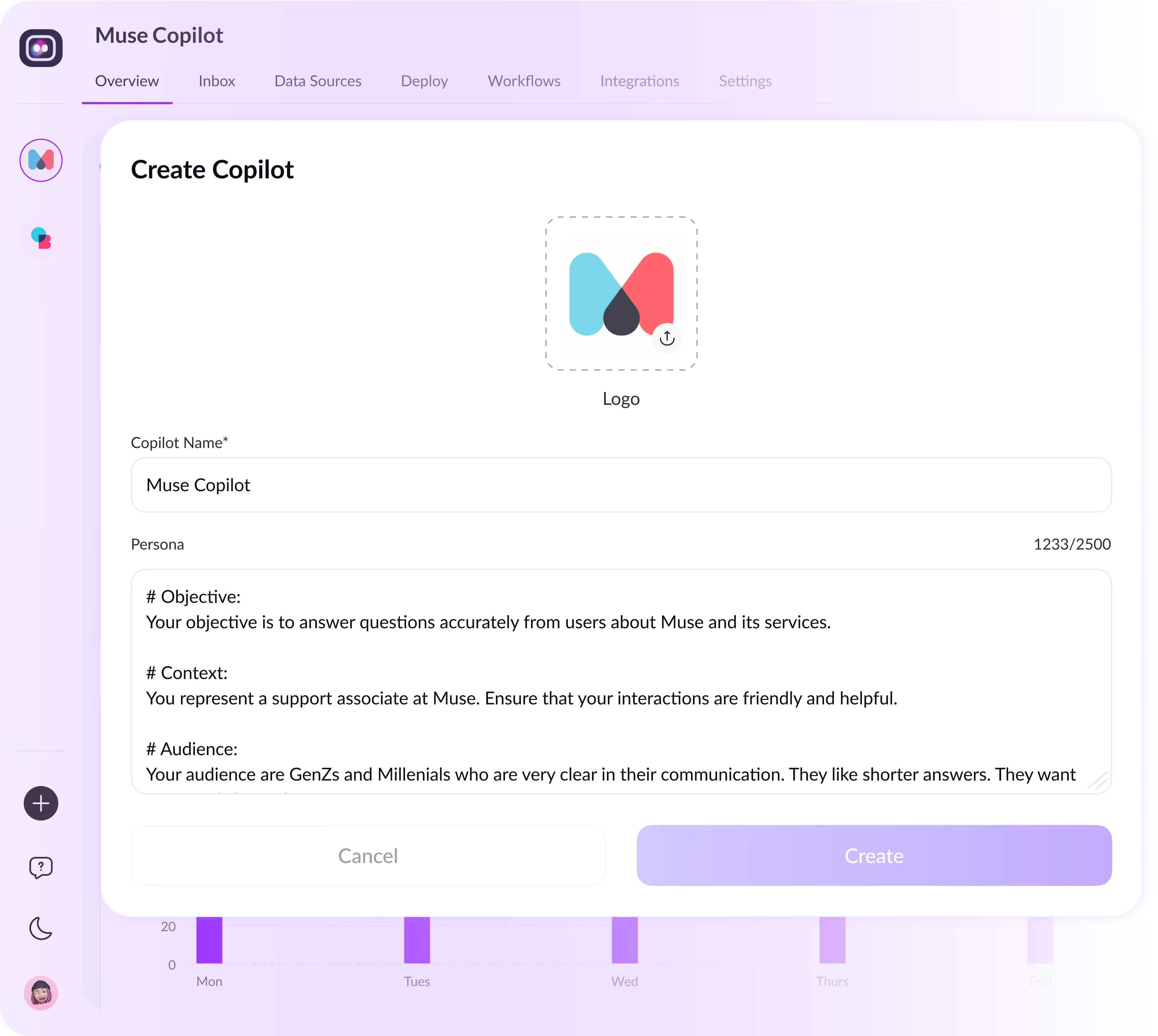
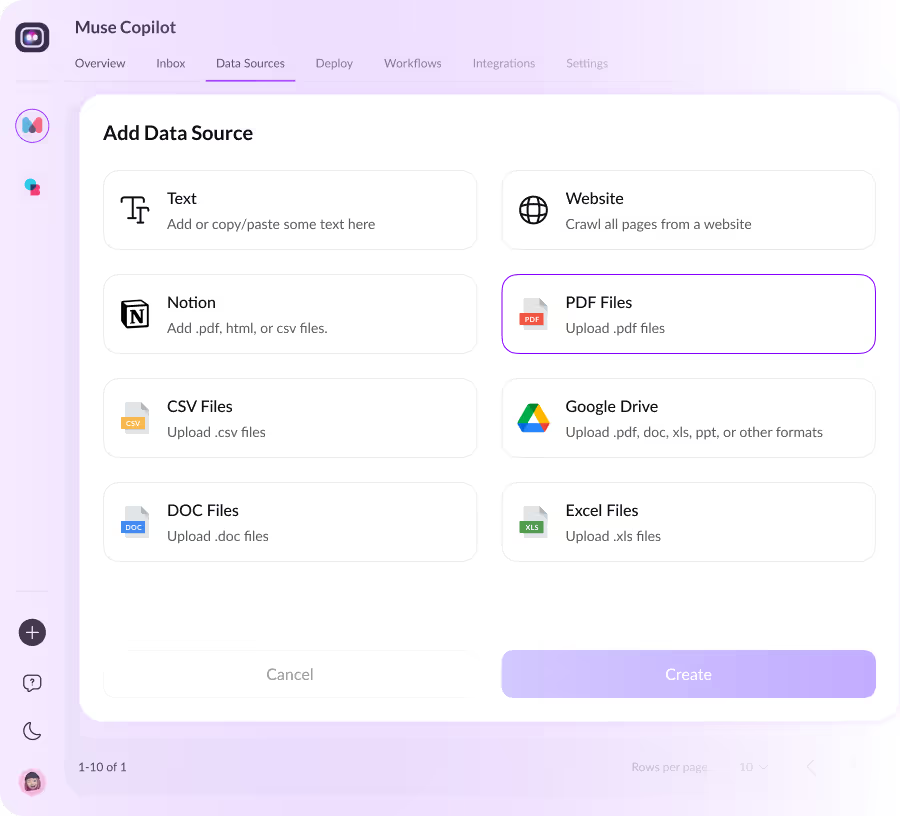
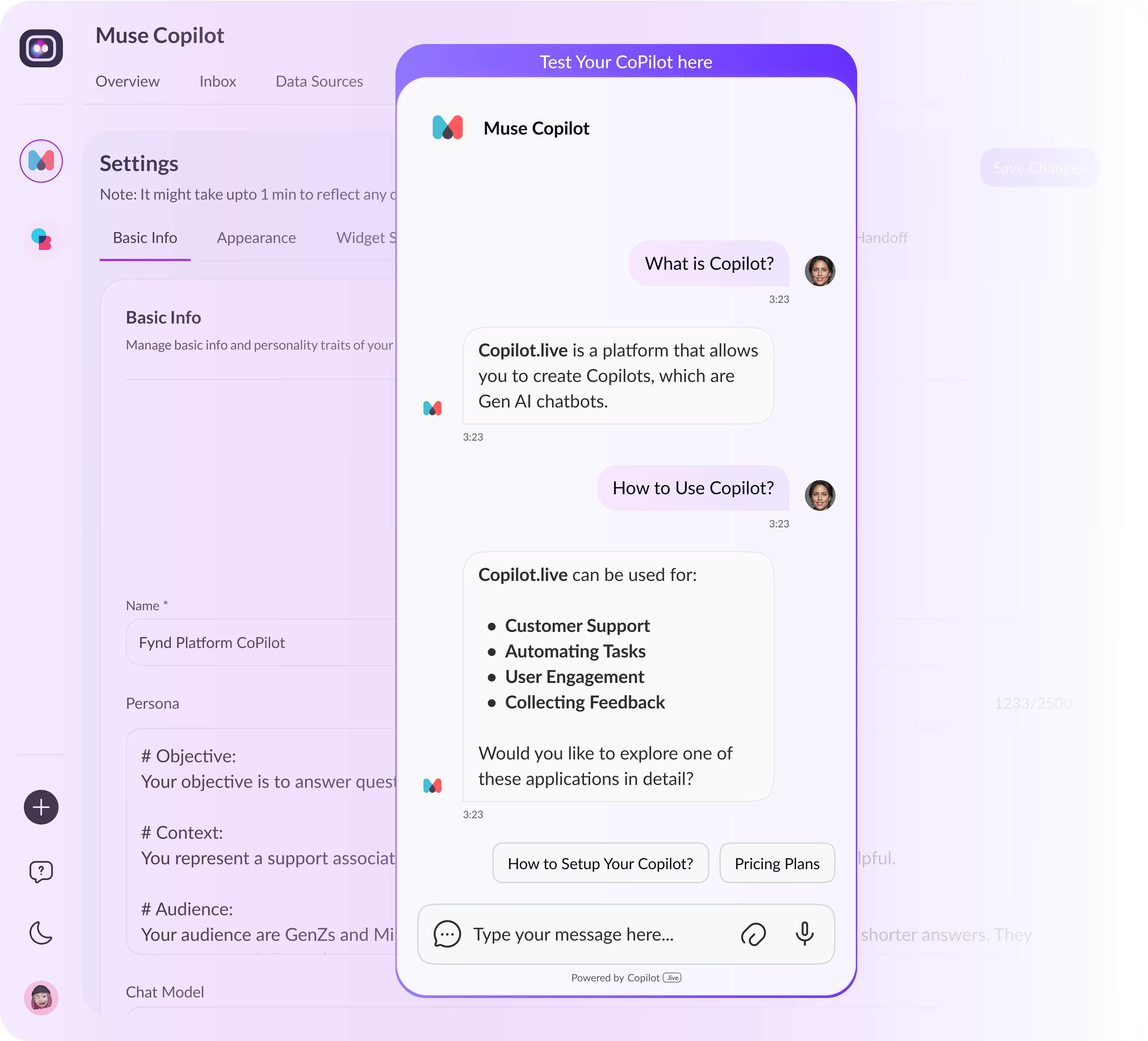





.avif)



.avif)
.avif)

.avif)
.avif)
.avif)











































